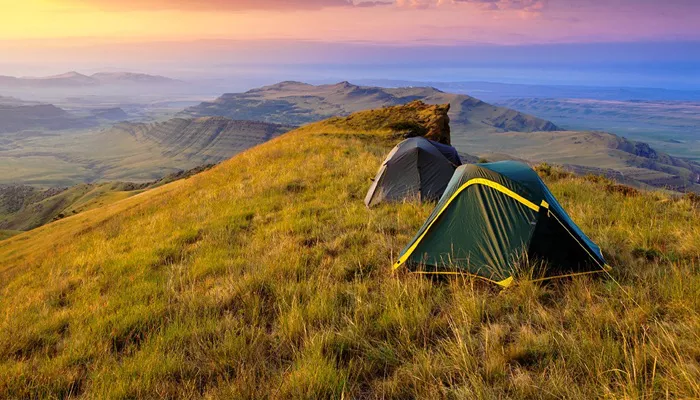Camping season depends on many factors. The best time to camp varies by location, weather, and personal preference. Some people camp year-round, while others prefer specific seasons. Understanding when camping season starts helps you plan better trips.
Most campers consider spring to fall as prime camping time. But the exact start date changes based on where you go. Let’s explore how different factors affect camping season.
Factors That Determine Camping Season Start
1. Geographic Location
Your location greatly impacts when camping season begins. In southern states like Florida or California, you can camp almost year-round. Northern areas like Minnesota or Canada have shorter camping seasons.
Mountain regions have different patterns than coastal areas. High elevation sites may remain snowy into early summer. Desert locations can be too hot in midday but perfect at night.
2. Weather Conditions
Temperature and precipitation decide when camping becomes comfortable. Most people prefer temperatures between 50-80°F (10-27°C) for camping. Heavy rain or snow makes camping difficult.
Spring weather can be unpredictable. Late snowstorms or heavy rains may delay season opening. Always check local forecasts before early season trips.
3. Campground Operations
Many public campgrounds operate seasonally. National parks often open facilities between May and October. Some remain open year-round with limited services in winter.
Private campgrounds may open earlier or close later than public ones. RV parks with full hookups often operate all year. Always check specific campground opening dates.
4. Personal Preferences
Your comfort level affects when your personal camping season starts. Some enjoy winter camping with proper gear. Others wait until summer warmth arrives.
Family camping often aligns with school vacations. Retirees may camp during shoulder seasons when crowds are smaller.
Camping Season by Region
North America
United States
- Southwest (Arizona, New Mexico): October to April (avoid summer heat)
- Pacific Northwest: May to September (wet other times)
- Rocky Mountains: June to September (high elevation)
- Northeast: Late April to October (cold winters)
- Southeast: Year-round (best October-April)
Canada
- Most campgrounds open Victoria Day (mid-May) to Thanksgiving (early October)
- Some winter camping available with special equipment
Europe
- Mediterranean countries: March to November
- Northern Europe: May to September
- Alpine regions: June to September
Australia/New Zealand
- Summer camping popular (December-February)
- Northern Australia: Dry season (May-October) best
- Southern areas: Spring through fall (September-April)
Best Months for Camping
Spring Camping (March-May)
Pros:
- Fewer crowds
- Wildflowers blooming
- Cooler temperatures
Cons:
- Unpredictable weather
- Some facilities closed
- Insects become active
Summer Camping (June-August)
Pros:
- Warm weather
- All facilities open
- Long daylight hours
Cons:
- Crowded campgrounds
- Higher prices
- Extreme heat in some areas
Fall Camping (September-November)
Pros:
- Beautiful foliage
- Fewer insects
- Cooler nights
Cons:
- Shorter days
- Some facilities closing
- Unpredictable storms
Winter Camping (December-February)
Pros:
- No crowds
- Unique landscapes
- Special activities (skiing, etc.)
Cons:
- Extreme cold
- Limited open campgrounds
- Special gear required
How to Determine Local Camping Season
1. Check Park Websites
National, state, and provincial parks list opening dates online. These show when facilities become available.
2. Contact Local Outfitters
Outdoor stores know local conditions well. They can advise when trails become passable.
3. Join Camping Forums
Online communities share real-time updates about conditions. Local campers provide the best advice.
4. Monitor Weather Patterns
Track seasonal forecasts for your destination. Unusual weather may delay season start.
Preparing for Early Season Camping
Early season trips require extra planning. Follow these tips:
- Verify Access: Roads or trails may be closed due to snow or mud.
- Pack for Cold Nights: Temperatures drop more than you expect.
- Bring Backup Gear: Conditions may be harsher than anticipated.
- Check Fire Regulations: Some areas restrict fires until late spring.
- Prepare for Mud: Spring thaw creates messy conditions.
Benefits of Shoulder Season Camping
Shoulder seasons (spring/fall) offer unique advantages:
- Lower campsite fees
- Fewer reservations needed
- More wildlife sightings
- Comfortable hiking temperatures
Special Considerations
High Altitude Camping
Melt timing determines access. Some high routes don’t open until July. Always check with ranger stations.
Desert Camping
Best in cooler months. Summer temperatures can be dangerous. Night camping works in extreme heat.
Coastal Camping
Watch for seasonal storms. Coastal fog may impact summer trips. Winter brings dramatic scenery but harsh conditions.
Camping Season Safety Tips
Know the Signs of Hypothermia: Early/late season brings cold risks.
- Watch for Flooding: Spring melt can create dangerous conditions.
- Prepare for Seasonal Hazards: Ticks in spring, bears in fall, etc.
- Carry Extra Supplies: Services may be limited early/late season.
- Leave Detailed Plans: Rescue services have longer response times off-season.
Extending Your Camping Season
With proper gear and skills, you can camp almost year-round:
- Invest in four-season tents
- Use appropriate sleeping bags
- Learn cold-weather camping techniques
- Try RV camping with heating systems
Conclusion
Camping season starts at different times depending on your location and preferences. While summer remains most popular, spring through fall offers excellent opportunities. With proper preparation, you can enjoy camping almost any time of year.
The best approach? Start checking local conditions as winter ends. Prepare your gear during late winter. Then hit the campgrounds as soon as conditions allow. This way you’ll maximize your camping season every year.
Remember – there’s no single “right” time to start camping. The perfect season begins when you feel ready to get outdoors and enjoy nature. With flexibility and proper planning, your personal camping season can be longer than you think.
Related topics:
Camping Season Ending Soon at Lac La Ronge Provincial Park
Camping Season is Coming to an End
Camp Kootaga Celebrates 102nd Camping Season

